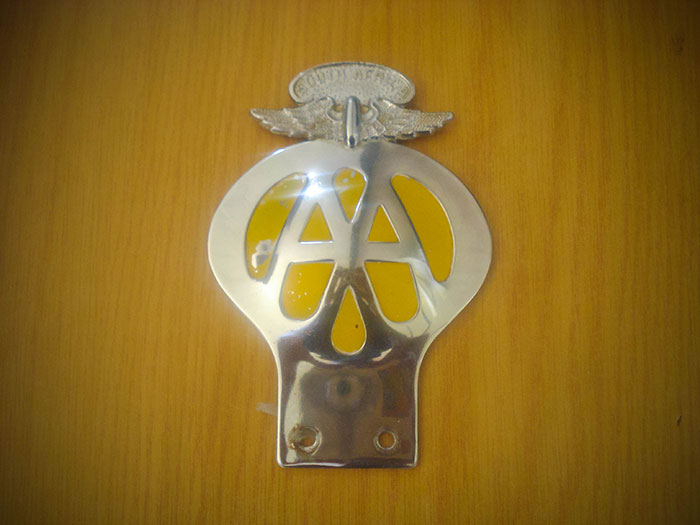
25 Nov Memorabilia – AA Badge
FMM assistant curator Cheslynne Ruiters takes a look behind one of the motoring world’s most famous badges…
On 19 June 1905, a trio of enthusiasts, Walter Gibbons, Charles Jarrott, Ludwig Schlentheim and Alfred Harris, banded together under the title ‘The Motorists Mutual Association’ (MMA) and formed a committee to consider ways to overcome the police oppression of early motorists and their use of speed traps. (Er, doesn’t that sound familiar? – ed). No sooner had the MMA been formed, on 26 June the committee voted to change its name to the Automobile Association (AA) and held its first general meeting at the Trocadero on 29 June. In response to the Motor Car Act 1903 that introduced new penalties for breaking the speed limit, a strategy was established to employ cycle scouts to patrol main roads and warn members of any police traps ahead. Initially, a motorcyclist and three pedal cyclists were recruited.
The first AA patrolmen had no uniforms and just basic pedal cycles, and only worked on weekends, indicating dangers on the road and helping motorists who had broken down. Scouts were supplied with a yellow armband marked with the letters ‘AA’ that were worn on the left arm above the elbow. Uniforms were only issued from 1909. The pedal cycles were fitted with a simple metal badge carrying the AA sign and the scout’s individual number as a means of identification for all passing drivers. It is likely that the first two of three hundred badges were made only in brass. By 1912 there were 950 cyclist patrols. In November 1907 a smaller version of the AA badge was made for motorcycles.
The AA appointed agents and repairers throughout the UK and 1 500 agents were listed in the AA Members’ Special Handbook, which first appeared in 1908: the first hotels were listed in 1909. As motoring became popular, public membership of the AA grew from an initial 100 to 83 000 by 1914. During WW1, motorcycle badges were given coloured heart-shaped tokens indicating membership expiry dates.
AA telephone boxes were put up initially as shelters for patrols. By 1920 there were 61 boxes, and members had a special key to open them. Members could make local calls free of charge. The association demutualised in July 1999 to become a private limited company, which was bought later the same year by Centrica (best known for its British Gas and Scottish Gas brands). In 2002 the AA Motoring Trust charity was created to continue the AA’s public interest and road safety activities. Centrica sold the AA in July 2004 to two private equity firms, CVC and Permira, who in July 2007 merged the AA with Saga under Acromas Holdings.



